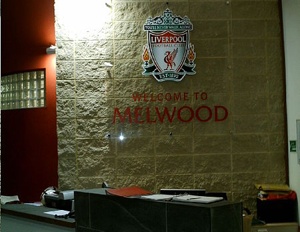
It’s not unusual for football fans to think of little else but the match itself. After all, their week builds up to kick-off and they spend their time discussing who will be in the starting XI and what the scoreline will be.
Things aren’t so simple for managers or their backroom staff. They have to work out which players are at full fitness and whether there are any burgeoning partnerships that should be nurtured. Managers need to look at tactics and work on set-pieces and so on.
That’s why most football supporters may not think about training grounds but why managers and players love them to be top-of-the-range. You’ll often hear stories of footballers saying they were impressed at the facilities they saw when they went to discuss a transfer to a club and it’s the training ground their talking about.
Much like actors who spend weeks and months in a rehearsal room, so footballers will spend far more time at their club’s training ground than in the stadium itself. But what should we know about them?
List of Football Club Training Grounds
Premier League
| Team | Training Ground |
|---|---|
| AFC Bournemouth | King's Park Training Base |
| Arsenal | Arsenal Training Centre |
| Aston Villa | Bodymoor Heath Training Ground |
| Brentford | Brentford F.C. Training Ground |
| Brighton & Hove Albion | American Express Elite Football Performance Centre |
| Burnley FC | Gawthorpe Hall |
| Chelsea | Cobham Training Centre |
| Crystal Palace | Crystal Palace Football Club Training Ground |
| Everton | Finch Farm |
| Fulham | Fullham FC Training Ground |
| Liverpool | Melwood |
| Luton Town | Luton Town F.C. Training Ground |
| Manchester City | City Football Academy |
| Manchester United | Aon Training Complex |
| Newcastle United | Darsley Park |
| Nottingham Forest | Wilford Lane |
| Sheffield United | Hallam FM Academy |
| West Ham United | West Ham United FC Training Ground, Chadwell Heath |
| Wolverhampton Wanderers | Sir Jack Hayward Training Ground |
Championship
| Team | Training Ground |
|---|---|
| Birmingham City | Wast Hills Training Ground |
| Blackburn Rovers | Brockhall Training Ground |
| Bristol City | BCFC Training Ground |
| Cardiff City | House of Sports Coaching Academy |
| Coventry City | Sky Blue Lodge |
| Huddersfield Town | Canalside Sports Complex |
| Hull City | Hull City AFC Training Ground |
| Ipswich Town | Playford Road Training Centre |
| Leeds United | Thorp Arch |
| Leicester City | Belvoir Drive Training Ground |
| Middlesbrough | Rockliffe Park Training Complex |
| Millwall | Millwall FC Training Ground |
| Norwich City | Colney Training Centre |
| Plymouth Argyle | Harpers Park |
| Preston North End | Preston North End Training Ground |
| Queens Park Rangers | Imperial College Sports Ground |
| Rotherham United | Roundwood Sports Complex |
| Sheffield Wednesday | Sheffield Wednesday FC Training Ground |
| Southampton | Staplewood |
| Stoke City | Clayton Wood Training Complex |
| Sunderland | The Academy Of Light |
| Swansea | Swansea City AFC Training Academy |
| Watford | Watford F.C. Training Ground |
| West Bromwich Albion | West Bromwich Albion Training Ground |
League One
| Team | Training Ground |
|---|---|
| Barnsley | Barnsley F.C. Academy |
| Blackpool | Squires Gate Training Ground |
| Bolton Wanderers | Lostock Training Ground |
| Bristol Rovers | Friends Life Sports Ground |
| Burton Albion | St George's Park |
| Cambridge United | Clare College Sportsground |
| Carlisle United | Sheepmount Athletics Stadium |
| Charlton Athletic | Charlton Athletic F.C. Training Ground |
| Cheltenham Town | Cheltenham Town F.C. Training Ground |
| Derby County | Moor Farm Training Ground |
| Exeter City | Cliff Hill Training Ground |
| Fleetwood Town | Poolfoot Farm |
| Leyton Orient | Chigwell Training Ground |
| Lincoln City | Sobraon Barracks |
| Northampton Town | Moulton College |
| Oxford United | Rovers Sports and Social Club |
| Peterborough United | Mick George Training Academy |
| Port Vale | Port Vale FC Academy |
| Portsmouth | The ROKO Health Club |
| Reading | Hogwood Park |
| Shrewsbury Town | Sundorne Castle Training Ground |
| Stevenage | Bragbury End Sports Ground |
| Wigan Athletic | Euxton Training Ground |
| Wycombe Wanderers | Wycombe Wanderers Training Ground |
League Two
| Team | Training Ground |
|---|---|
| Accrington Stanley | Wilson’s Playing Fields and King George V Playing Fields |
| AFC Wimbledon | King's College Sports Ground |
| Barrow AFC | Hopwood Hall |
| Bradford City | Rawdon Meadows Playing Field |
| Colchester United | Florence Park |
| Crawley Town | Ardingly College |
| Crewe Alexandra | Crewe Alex Academy Training Ground |
| Doncaster Rovers | Cantley Park |
| Forest Green Rovers | Forest Green Training Centre |
| Gillingham | Beechings Cross Gillingham Football Club Training Ground |
| Grimsby Town | Cheapside Training Ground |
| Mansfield Town | The John Fretwell Sporting Complex |
| MK Dons | MK Dons FC Training Ground |
| Newport County | Newport County AFC Training Ground |
| Notts County | Eagle Valley Stadium |
| Salford City FC | Partington School Fields |
| Stockport County | Stockport County Training Centre |
| Swindon Town | King Edwards Place |
| Tranmere Rovers | Solar Campus Circuit Training |
| Walsall | Walsall FC Training Ground |
| Wrexham A.F.C | Nine Acre |
Scotland
| Team | Training Ground |
|---|---|
| Aberdeen | Aberdeen FC Training Ground |
| Celtic | Lennoxtown training centre |
| Dundee United | Saint Andrews |
| Hamilton Academical | New Douglas Park |
| Heart Of Midlothian | Heart of Midlothian FC Training Ground, Riccarton |
| Hibernian | Hibernian Training Centre |
| Kilmarnock | Kilmarnock Football Club Training Ground |
| Livingston | Livingston FC Training Ground |
| Motherwell | Dalziel Park |
| Partick Thistle | Glasgow Green Football Center |
| Rangers | Murray Park |
| Ross County | Highland Football Academy |
| Scotland | Murray Park |
| St Mirren | Ralston Training Complex |
| St. Johnstone | McDiarmid Park Training Ground |
ROW
| Team | Training Ground |
|---|---|
| AC Milan | Milanello |
| ACF Fiorentina | Centro Sportivo Campini |
| AFC Ajax | Sportpark De Toekomst |
| AIK Fotboll | Skytteholms IP |
| AS Monaco | Training Center La Turbie |
| AS Roma | Trigoria training ground |
| AS Saint-Étienne | ASSE |
| Atalanta | Centro Sportivo Bortolotti Corso Europa, Zingonia |
| Athletico Bilbao | Lezama Facilities |
| Atlético Madrid | Ciudad Deportiva de Majadahonda |
| Barcelona | Ciutat Esportiva Joan Gamper |
| Bayer Leverkusen | Kurtekotten |
| Bayern Munich | Säbener Strasse |
| Benfica | Futebol Campus |
| Beşiktaş | Nevzat Demir Tesisleri |
| Borussia Dortmund | Hohenbuschei |
| Borussia Mönchengladbach | Borussia-Park Training Ground |
| Cardiff City | House of Sports Coaching Academy |
| Celta Vigo | Instalacións Deportivas da Madroa |
| Club Brugge KV | Club Brugge Training Ground |
| Denmark | Nummer 10 |
| Deportivo Alavés | Instalaciones de Ibaia José Luis Compañon |
| Dynamo Kyiv | Dynamo Training Center |
| Eintracht Frankfurt | Football Performance Centre |
| Espanyol | Ciutat Esportiva Dani Jarque |
| FC Basel 1893 | FC Basel Training Ground |
| FC Cologne | Geißbockheim |
| FC Copenhagen | Nummer 10 |
| FC Porto | CTFD PortoGaia |
| FC Red Bull Salzburg | Red Bull Academy |
| FC Schalke 04 | Geschäftsstelle |
| FC Shakhtar Donetsk | Kirsha Training Centre |
| FC Ural | SKB-Bank Arena |
| Fenerbahçe | Can Bartu Training Facilities |
| Feyenoord | Sportcomplex Varkenoord |
| Fortuna Düsseldorf | Sports training center |
| France | Clairefontaine |
| Galatasaray | Florya Metin Oktay Facilities |
| Girondins de Bordeaux | Château du Haillan |
| Hamburg SV | Hamburger SV Training Ground |
| Hertha Berlin | Schenkendorfplatz |
| Hoffenheim | Hoffenheim Training Ground |
| Hungary | MLSZ Technical Centre |
| Inter Milan | Angelo Moratti Sports Centre |
| Juventus | Juventus Centre |
| Lechia Gdańsk | Unknown |
| Legia Warsaw | Stadion Miejski Legii Warszawa im. Marszałka Józefa Piłsudskiego |
| Lille OSC Métropole | Domaine de Luchin |
| Napoli | Centro Sportivo Castel Volturno |
| Netherlands | KNVB Campus |
| Newport County | Newport County AFC Training Ground |
| Northern Ireland | Various |
| OGC Nice | Charles-Ehrmann Sports Park |
| Olympiacos | Rendis Training Centre |
| Olympique de Marseille | Centre d'entraînement Robert Louis-Dreyfus |
| Olympique Lyonnais | Centre Tola Vologe |
| Paris Saint-Germain | The Camp des Loges |
| PFC Ludogorets Razgrad | Sport Center Ludogorets |
| PSV Eindhoven | De Herdgang |
| R.S.C. Anderlecht | ESSMA Training Centre |
| RC Lens | La Gaillette |
| Real Madrid | Real Madrid City |
| Real Sociedad | Zubieta Training Ground |
| Republic Of Ireland | FAI National Training Centre |
| Romania | Mogosoaia Stadium |
| Rubin Kazan | Rubin Stadium |
| SD Eibar | Atxabalpe |
| Serbia | Sports Centre of the Football Association of Serbia |
| Sevilla | Ciudad Deportiva José Ramón Cisneros Palacios |
| Slavia Prague | Eden Training Centre |
| Spartak Moscow | Tarasovka Training Ground |
| Sporting Club de Portugal | Academia Sporting |
| SS Lazio | Formello Training Ground |
| Swansea | Swansea City AFC Training Academy |
| Toulouse | Allées Gabriel Bienes |
| TSV 1860 München | Gruenwalder |
| Valencia CF | Ciudad Deportiva de Paterna |
| Villareal | Ciudad Deportiva Villarreal CF |
| Wales | Dragon Park |
| Wrexham A.F.C | Nine Acre |
| Zenit St. Petersburg | Gazprom Training Center |
Types of Training Grounds and Facilities
It goes without saying, but football clubs of different standards have different facilities in their training grounds. A League Two side is unlikely to have the same sort of equipment as a Premier League side that consistently qualifies for the Champions League, for example.
This, then, isn’t an all-encompassing look at the sort of thing you’d find in any training ground in the country. Rather it’s an exploration of what the best facilities available would offer. We’re going to have a look at some of the best training grounds in the UK after this, so hopefully you’ve have an idea of what you’d find if you were given a tour of a club’s training facility.
Outdoor Pitches
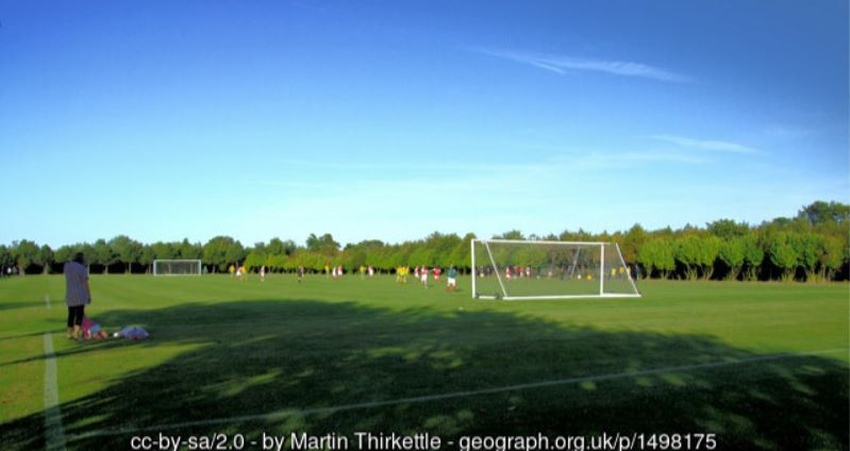
Self-explanatory, really. Top football club will have a number of outdoor pitches to use for things such as training, practice matches and inter-squad games. Normally the main pitch will be the same size as the pitch at the club’s home ground. As we’ve explained elsewhere, not all football pitches are the same size. That’s why some clubs opt to have a pitch that is adaptable so they can change the pitch markings to match those of the team they’ll be playing against next.
Old Trafford, for example, is longer and wider than the playing surface at Stamford Bridge. Chelsea could adjust the size of the pitch they practice on to ensure that it’s less of a surprise to their players when they run out at the home of the Red Devils. Likewise, United’s staff could potentially make their pitch smaller so their players are used to working in tighter spaces before heading to West London.
As well as outdoor pitches similar to the ones used in the team’s home ground there are also often all-weather pitches. This means that if there’s been heavy rain or snow then training can still take place in the sort of conditions that the footballers can expect to encounter in a match. There’s normally a full-size all-weather pitch and a five-a-side pitch for smaller games.
5-a-side is now a common way of playing football, but when the game was still developing it was virtually unheard of. Training traditionally consisted of fitness work such as road running, not working with the ball. When Bill Shankly took over as Liverpool manager in the 1960s, for example, one of his first decisions was to introduce 5-a-side as a key tenet of his training regime; getting players used to having to run with the ball rather than without it.
Indoor Pitches
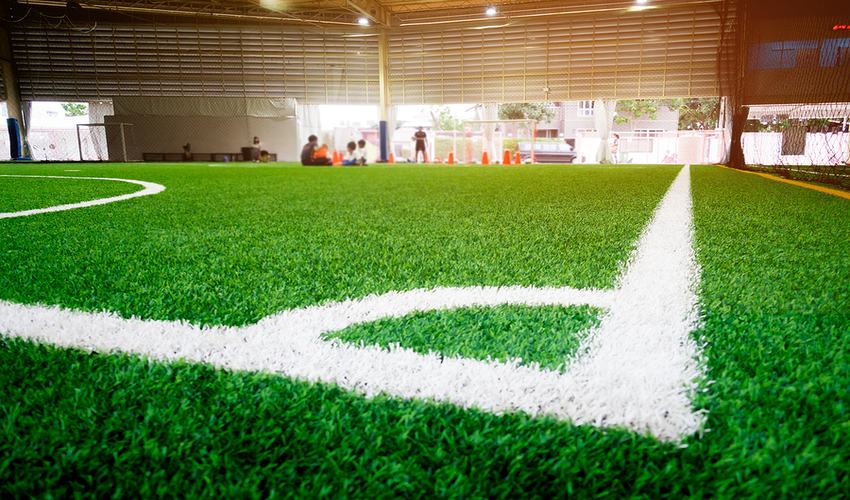
From time to time it is necessary for a club to move their matches or training indoors.
More often than not this is due to severe weather problems, though it’s also not unheard of for a club to do so in order to try and keep their tactics and formations a secret.
Essentially everything that applies to the outdoor pitches can also be thought of as being relevant to indoor pitches, including having both full-size and five-a-side variations.
The Gym
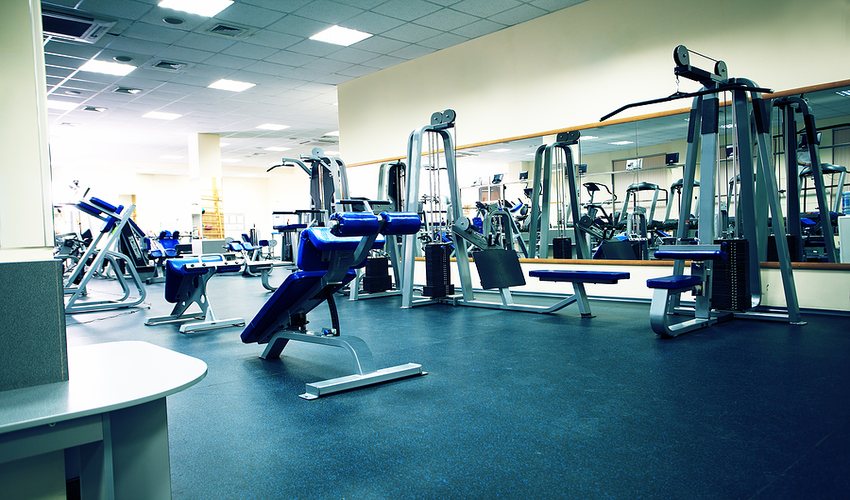
As important as the ability to play with the ball is, it’s also crucial for players to be at peak physical condition. Of course ‘peak’ condition is different from one manager to another. Some managers like their players to be able to run and run and never tire, necessary for a high-pressing game. Others like strong footballers who can cope with the more physical side of the game and might ask their players to bulk up. Either way they require the use of a gym to help them do what’s required of them.
Training grounds often feature row upon row of exercise bikes, weight machines, running machines and so on. The ever-evolving nature of technology means not only that fitness experts can choose specific machines for individual players to use but can also monitor their progress precisely. They can tailor workouts for each footballer depending on what they need to work on. A young player might need to bulk up their muscle mass, for example, or an older one may need to do more cardiovascular work.
Swimming Complex
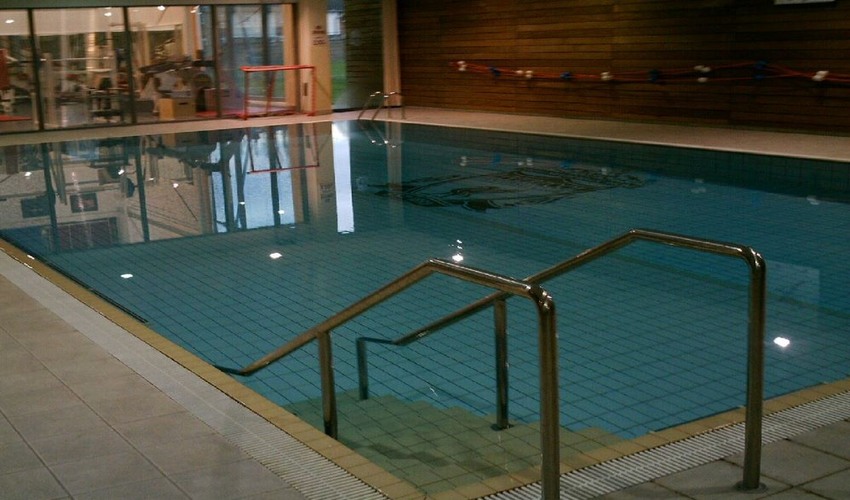
One of the best types of exercise people with injuries can do is swimming. It is an excellent cardiovascular workout but also relieves weight from joints and muscles that have suffered damage. That’s why plenty of football club’s have large swimming complexes. It’s where players returning from injury can do some work in order to ensure they stay in as good a condition as possible without risking damaging an injury any further.
As well as swimming pools some training grounds will also contain a hydrotherapy area. This is often a separate thing from the swimming pool itself and will be used for players who have been injured quite badly and can’t even swim. It is a more gentle re-introduction to various exercises and fitness techniques and can be a crucial part of a player’s recovery back to full fitness.
Player Recovery Centre
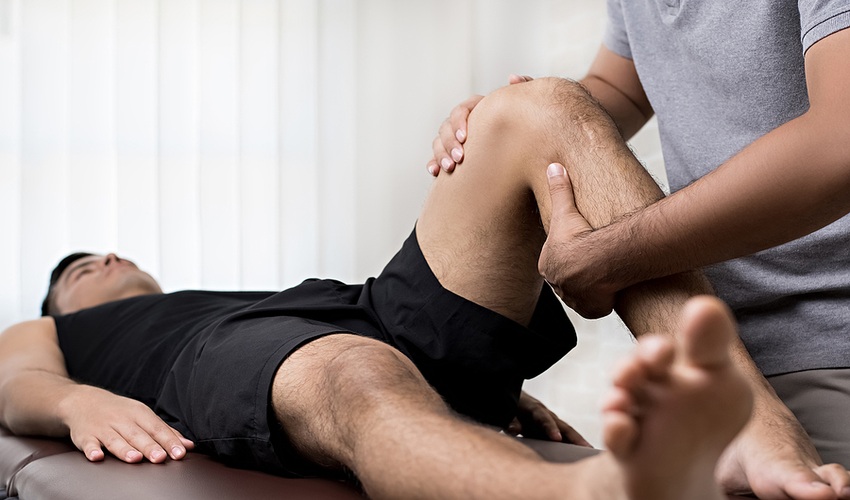
Different clubs will have different names for this area, but it’s essentially the physio room for injured players.
As useful as swimming and hydrotherapy may be for a footballer’s recovery, there are plenty of things that need to be done in a more scientifically specific manner.
Whilst players will often be sent to hospital for scans on damaged bones, muscles, ligaments and so on, there’s still plenty that can be assessed and worked upon by the physiotherapists and doctors that clubs have on their payroll.
Clubs have rehabilitation suites where players’ injuries can be worked upon by specialists.
Other Areas
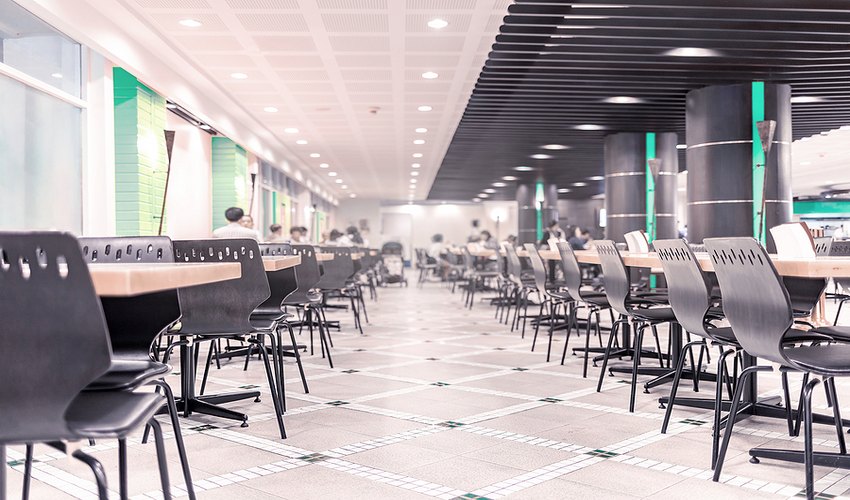
The above sections are arguably the most important areas within a club’s training ground, but there are other spaces that are fairly common across most clubs in the Football League.
Here’s a more condensed look at some of them:
- Manager’s Office – This is where the club manager goes to figure out his tactics, look at his players and explore any possible transfer targets, amongst other things
- Common Room – Players need to be able to relax in their downtime. Common areas will often feature the likes of table-tennis tables, dart boards and so on
- Canteen – Food analysis has changed markedly from the days when players would have a pie and chips for tea! This is where they’ll get their food, normally including specifically tailored plans
- Opposition Prep – Football clubs have teams whose job is to prepare media and information for the manager and players about opposition teams. They’re normally based in the training ground
- Meeting Room – An obvious one, but this is where teams will meet to discuss any pressing matters, bringing together the tactical work of the manager and the research of the opposition prep team
- Washing Facilities – Players’ clothes get dirty, as do their kits and so on. Training grounds tend to have areas for the kit men to clean them all up
- Boot Room – Anfield had arguably the most famous boot room in world football, though ironically few boots were actually kept in their. It’s where the most important piece of equipment a player wears is looked after and maintained
The Best Training Grounds In World Football
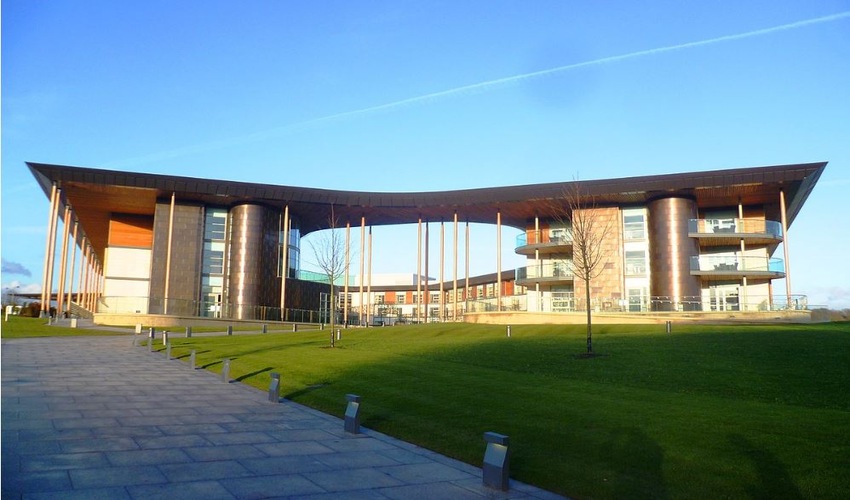
This is obviously a subjective thing, with different clubs wanting different things from their training facilities.
Some clubs have invested a significant amount of money in their training areas, however, so there is a general acceptance within the football community that the following are some of the best in the business.
Given it’s tricky to rank subjective topics, these are in no particular order.
- Milanello Sports Centre – AC Milan’s training facilities have been in operation since 1963 and is spread across 160,000 square metres
- De Toekomst – Just across the road from Amsterdam ArenA is Ajax’s training centre. Building began in 1993 and it opened in 1996 with a name that means ‘the future’
- Cobham Training Centre – Since Roman Abramovich bought Chelsea he has spared no expense in making them one of the most competitive teams in the world. Their training ground cost around £20 million to build, but they continue to reap the benefits
- London Colney – Another London-based training facility, Arsenal’s Colney centre opened in 1999 and designers followed the specific instructions of Arsene Wenger
- Ciutat Esportiva Joan Gamper – Named after the Swiss national who helped to found the club, Barcelona’s training centre opened in 2009 as a replacement for La Masia. Costing around £60 million, it’s as state-of-the-art as it’s possible to get
- The Aon Training Complex – Formerly known as Carrington but having its name changed as a result of a £120 million sponsorship deal, Manchester United’s training ground has an incredible fourteen pitches within its 108 aces
- City Football Academy – Manchester United’s neighbours have coped the Roman Abramovich method of spending as much money as possible to buy success, including the development of this £200 million training facility. To be fair to the club, this has regenerated a part of the city and along with The Etihad Stadium is known as The Etihad Complex
- Ciudad Real Madrid – Not to be outdone by their Spanish rivals, Real Madrid City, to use its English translation, contains all of the facilities you’d expect along with Alfredo di Stéfano Stadium. This small stadium is where the Real reserve team play their games
- USM Finch Farm – Everton’s training ground has been nicknamed The School of Science by the club’s fans. The training ground opened in 2007 and offers ten full-size pitches, a replica of the pitch at Goodison Park and numerous other top-of-the-range facilities
- St. George’s Park – International sides need a decent training area too and England’s St. George’s Park complex is one of the best in the world. You may not see it transpire on the pitch, but this contains one of football’s best medical facilities
